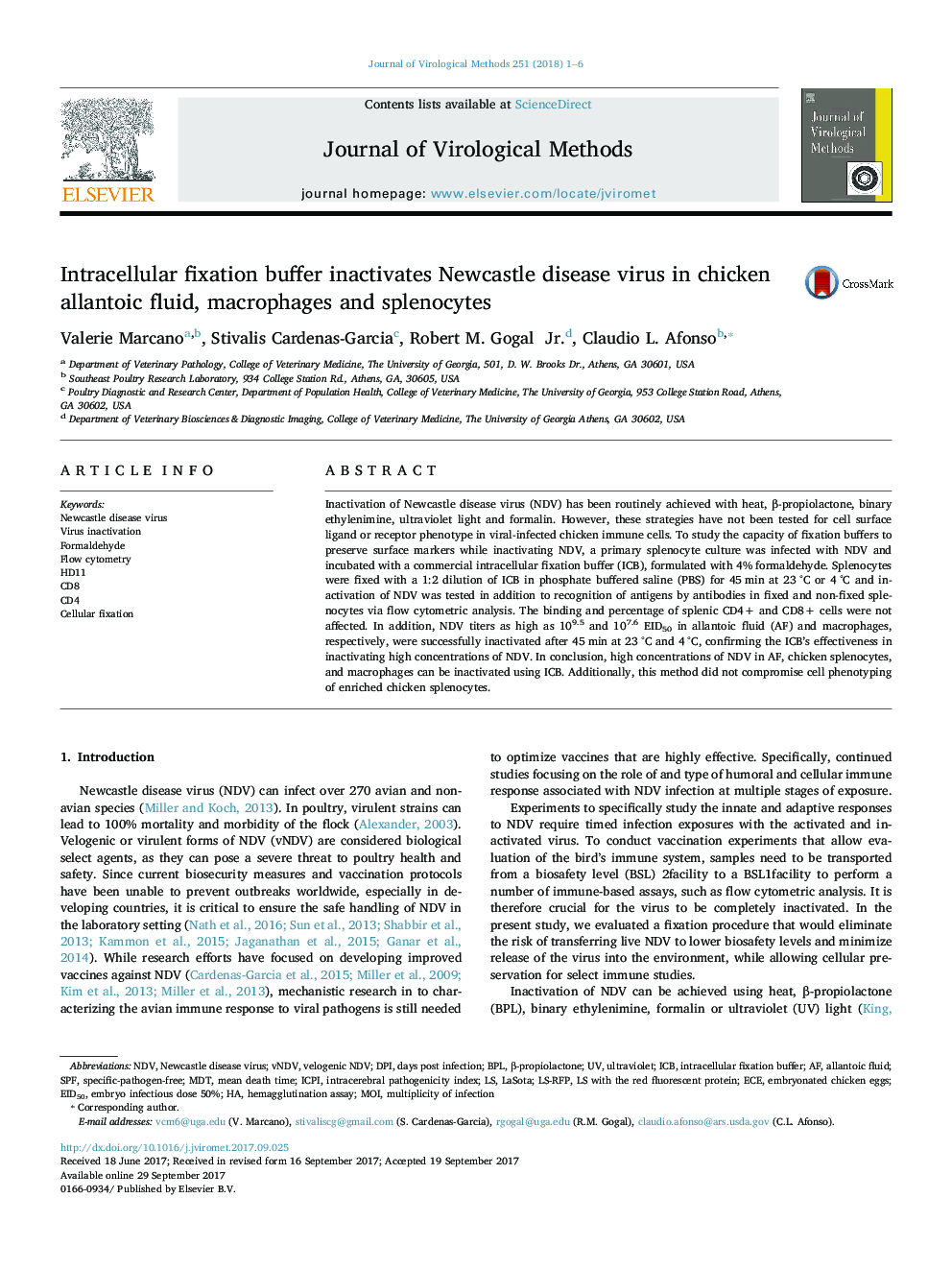| Article ID | Journal | Published Year | Pages | File Type |
|---|---|---|---|---|
| 5672878 | Journal of Virological Methods | 2018 | 6 Pages |
â¢Avian splenocyte fixation with a 1:1 ICB dilution does not significantly impact phenotyping.â¢NDV in infected splenocytes can be inactivated using a 1:1 ICB dilution for 45 min at 23 °C and 4 °C.â¢1 Ã ICB can inactivate 109.5 EID50 of AF-suspended NDV in 45 min at 23 °C and 4 °C.â¢NDV present in infected HD11 cells can be inactivated using 1 Ã ICB for 45 min at 4 °C.
Inactivation of Newcastle disease virus (NDV) has been routinely achieved with heat, β-propiolactone, binary ethylenimine, ultraviolet light and formalin. However, these strategies have not been tested for cell surface ligand or receptor phenotype in viral-infected chicken immune cells. To study the capacity of fixation buffers to preserve surface markers while inactivating NDV, a primary splenocyte culture was infected with NDV and incubated with a commercial intracellular fixation buffer (ICB), formulated with 4% formaldehyde. Splenocytes were fixed with a 1:2 dilution of ICB in phosphate buffered saline (PBS) for 45 min at 23 °C or 4 °C and inactivation of NDV was tested in addition to recognition of antigens by antibodies in fixed and non-fixed splenocytes via flow cytometric analysis. The binding and percentage of splenic CD4+ and CD8+ cells were not affected. In addition, NDV titers as high as 109.5 and 107.6 EID50 in allantoic fluid (AF) and macrophages, respectively, were successfully inactivated after 45 min at 23 °C and 4 °C, confirming the ICB's effectiveness in inactivating high concentrations of NDV. In conclusion, high concentrations of NDV in AF, chicken splenocytes, and macrophages can be inactivated using ICB. Additionally, this method did not compromise cell phenotyping of enriched chicken splenocytes.
